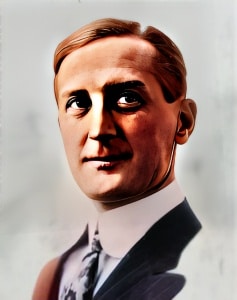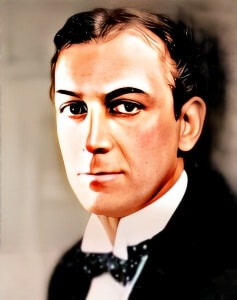 William V. Mong, born on June 25, 1875, in Chambersburg, Pennsylvania, was a multifaceted American talent whose contributions to the film industry left an indelible mark.
William V. Mong, born on June 25, 1875, in Chambersburg, Pennsylvania, was a multifaceted American talent whose contributions to the film industry left an indelible mark.
Over the course of his career, spanning from 1910 to 1939, Mong distinguished himself as an actor, screenwriter, and director, leaving behind a legacy of nearly 200 films. His influence extended across the silent film era, and his versatility was showcased not only in front of the camera but also behind it, where he directed and wrote for short films.
Before delving into the cinematic realm, Mong’s journey in the world of entertainment began on the vaudeville and stage circuits. From Los Angeles to Chicago and New York City, he honed his craft as a stage actor, earning valuable experience that would later translate seamlessly to the burgeoning film industry.
In 1910, William V. Mong made his foray into cinema with the film “A Connecticut Yankee,” marking the commencement of a prolific film career that would span nearly three decades. His cinematic ventures encompassed a wide range of roles, showcasing his ability to adapt to diverse characters and genres. As an actor, Mong brought a dynamic presence to the screen, capturing the essence of each character he portrayed.
One notable entry in Mong’s filmography is his role in the 1922 film “ Monte Cristo,” where he portrayed Caderousse, the innkeeper. This cinematic adaptation of Alexandre Dumas’ classic novel “ The Count of Monte Cristo” provided Mong with a platform to showcase his acting prowess. As Caderousse, the innkeeper, Mong likely added depth and nuance to the character, contributing to the overall success of the film.
However, Mong’s contributions to the film industry were not limited to acting alone. He demonstrated his directorial and screenwriting skills primarily in the realm of short films, leaving an impact during the years 1911 to 1922. Short films, though concise in duration, demanded a keen understanding of storytelling, and Mong proved his capability in weaving compelling narratives within the constraints of limited screen time.
The latter part of Mong’s life was marked by a period of illness that began in 1938. Despite his ailing health, he continued to leave an enduring legacy through his extensive body of work. His final years were a testament to his resilience and dedication to his craft.
On December 10, 1940, William V. Mong passed away in Studio City, California. His death marked the end of a career that had witnessed the evolution of the film industry from its nascent stages to a thriving cultural phenomenon. Mong’s resting place is at Grand View Memorial Park Cemetery in Glendale, California, a physical reminder of his lasting impact on American cinema.
In the annals of film history, William V. Mong’s name may not be as widely recognized as some of his contemporaries, but his contributions were undoubtedly significant. From the vaudeville stages to the silver screen, Mong’s journey reflects the transformative years of early American cinema. His versatility as an actor, director, and screenwriter remains a testament to his enduring influence on the art of storytelling through film.
Loading live eBay listings...




